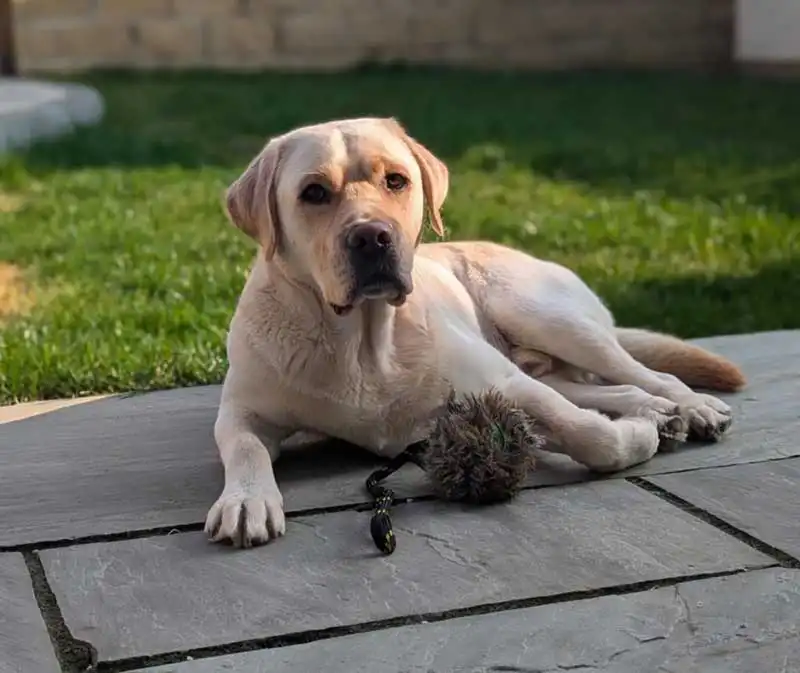18 Jun 2025
Dog fitted with balloon dilation feeding tube that can be inflated at home.

Colt's xray with the stricture measurement.
A new treatment device has helped a dog make a full recovery from a severe oesophageal stricture without the need for repeated dilations under anaesthesia.
Colt, a two-and-a-half-year-old Labrador, was fitted with an oesophageal balloon dilation feeding tube (B-tube) at the University of Edinburgh’s Hospital for Small Animals after being diagnosed with a 9cm stricture.
The device, which clinicians at the hospital are hoping to use more in both dogs and cats, is comprised of a feeding tube with an integrated balloon that can be inflated by clients at home to resolve the issue.
First developed in the US, the B-tube is fitted after the stricture is progressively dilated under an anaesthetic.
Pet owners are then trained after recovery to provide the correct amount of nutrition via the tube and to inflate the balloon twice per day until the issue is resolved without the need for further anaesthesia – for Colt, the B-tube remained in place for six weeks.
Colt was referred to the hospital after developing gastroenteritis following a general anaesthetic procedure, which caused him to persistently regurgitate his food and lose 20% of his body weight.
The Labrador is said to have tolerated the B-tube well and he was able to eat by himself following the surgery.
Following the B-tube’s removal, he continued to eat a softened GI low-fat food by himself, and within two months he was back to his normal target weight and eating his original food with no regurgitation.
Colt’s owners said he was “incredibly unwell” when he arrived at the hospital but after receiving “outstanding” care he is “now bouncing back to his normal happy self,” for which they are “forever grateful.”
RCVS specialist in small animal medicine and hospital lecturer Tyler Morrison said: “Colt is a lovely boy and we are pleased he has made a full recovery whilst avoiding the concerns of multiple anaesthetics.
“His care required close collaboration between our internal medicine team with many of our other specialist teams including anaesthesia and diagnostic imaging, as well as our specialist medicine and nutrition nurses.
“Importantly, Colt’s care was continued by his dedicated owners at home to achieve this positive outcome. We wish him well for the future.”
